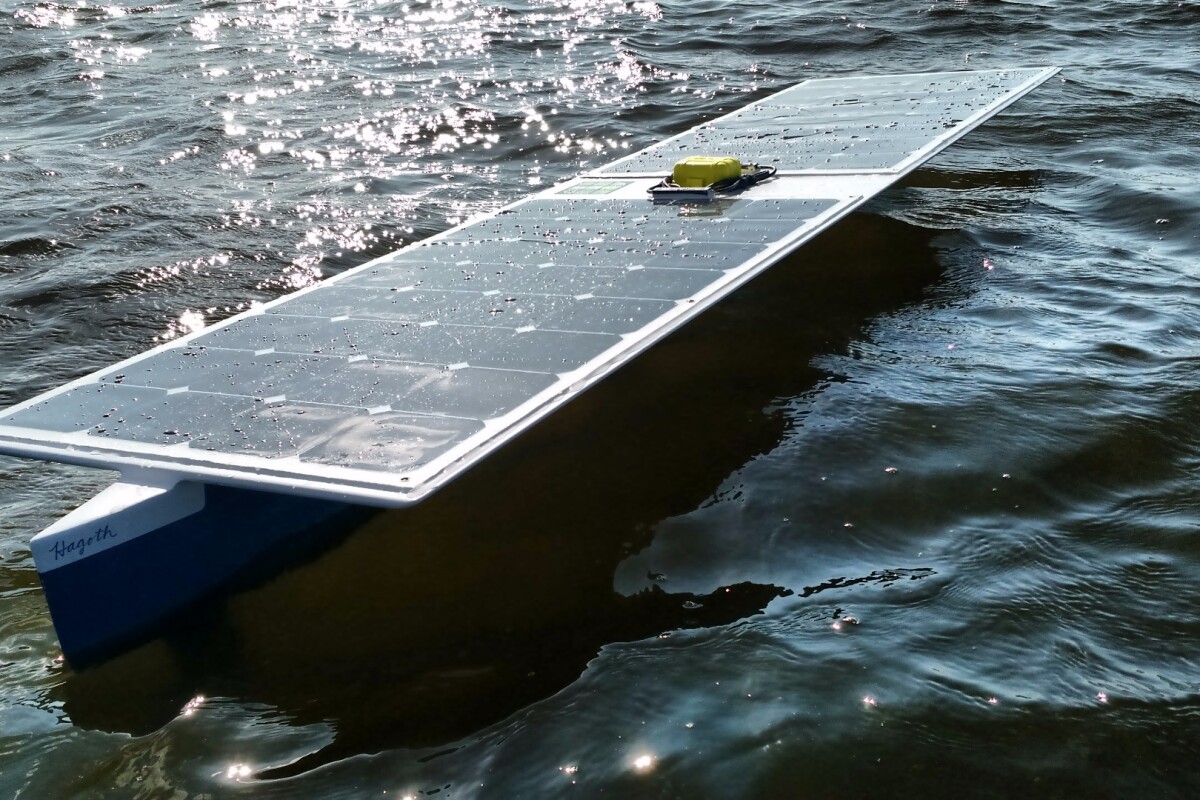Silicon Valley father of four Damon McMillan is hoping to launch the fruits of a two year garage project in time for Memorial Day. He's just put the finishing touches to his Seacharger boat and plans to set it off on a solo trip from the Californian coast down to Hawaii on May 30. The craft is designed to cut through the waves using only a motor powered by solar panels.
We've seen a few PV-topped seafaring rovers before, of course, but boats like the Wave Glider and the C-Enduro used the waves or the wind as well as the sun to help keep them moving along. The Seacharger is designed to be the first to successfully cross an ocean on its own using solar power only.
McMillan started the Seacharger project toward the end of 2013 by gluing together and shaping over two dozen foam pieces to form a plug for a fiberglass hull mold. The hull itself is fashioned from foam covered in fiberglass, and the craft is 91 inches long and 22 inches wide (2.3 x 0.55 m). Work then began on the propulsion system.
The propeller is rotated by a brushless electric motor (the kind used for remote-controlled hobby aircraft) connected to a belt drive reduction mechanism to ensure a slow, steady spin. The hull is topped by two Renogy PV panels rated at 100-watts that each juice up a 50 cell LiFePo4 battery bank housed within a thruster pod (fashioned from a PVC pipe) suspended below the craft by carbon fiber struts.

The Seacharger is also home to an Arduino-based autopilot, GPS and satellite modem circuitry housed in a watertight enclosure positioned between the solar panels. It weighs in at 50 lb (22.7 kg) and has a cruising speed of 3 knots. McMillan reckons it can manage 3 days of travel without needing sunlight before the batteries drain, but will happily boat along indefinitely when baking in the sun's rays.
The completed boat was tested on autopilot for the first time just last month and, weather permitting (there are high winds off the Californian coast at the time of writing), it will begin its 2,000 mile (3,200 km) journey on Monday. You can track its progress via the source link below.
Fingers crossed it will fare better than the student-created Scout, which was lost on the high seas on its way to Spain in November 2013.
Source: Seacharger
















